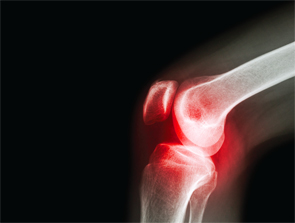
Puwadol Jaturawutthichai/shutterstock.com
The benefits of exercise therapy for individuals with knee osteoarthritis (OA) are well known. The ACR strongly recommends both aquatic exercise and land-based aerobic and resistance exercise for managing knee OA.1
A recent Cochrane systematic review and meta-analysis concluded that high-quality evidence supports the use of exercise to reduce pain and improve physical function and quality of life for those with knee OA.2 In fact, the effect sizes for exercise calculated in this meta-analysis are similar to published estimates of the effects of non-steroidal anti-inflammatory drugs.
Recent guidelines from the Centers for Disease Control and Prevention support treating chronic pain (including pain due to OA) with exercise therapy.3
Despite the known short-term benefits of exercise therapy for those with knee OA, maintenance of these benefits is challenging. Studies including sustainability data have noted minimal long-term effects.2 This is likely related to the small proportion of patients with OA who meet physical activity recommendations. A 2013 meta-analysis found that individuals with knee OA averaged 50 minutes of moderate to vigorous physical activity per week (measured in bouts of at least 10 minutes).4 These averages fall far short of the World Health Organization’s recommendation of 150 minutes per week of moderate physical activity or 75 minutes per week of vigorous physical activity.5 A study based on National Health Interview Survey data concluded that nearly half of adults with arthritis do not participate in any form of leisure-time physical activity.6
The challenge for rheumatology and rehabilitation clinicians and researchers is to discover the optimal combination of nonpharmacological treatments for knee OA. It’s important to determine what delivery system, mode and dosage of exercise therapies provide the greatest effects for those with knee OA, how best to supplement exercise with manual therapy or other techniques to maximize benefit and how to sustain these benefits over a longer period of time.
Exercise Therapy
Supervised vs. unsupervised exercise: A 2005 study concluded that a clinic-based exercise and manual therapy program was superior to a home-based exercise program after four weeks. Although both groups continued to show clinically meaningful changes at one year compared with baseline, the differential effects between the groups were not maintained at one year.7 A recent Cochrane review noted considerable heterogeneity in the number of supervised treatment sessions across studies investigating exercise therapy for knee OA, making it difficult to recommend a specific number of visits or weeks over which to provide formal supervised care.2 When comparing home-based and group-based exercise programs to individually supervised programs, the effect sizes for pain were quite different: standardized mean difference (SMD) 0.38 for home-based programs; SMD 0.42 for class-based programs; SMD 0.76 for individually supervised programs.2
